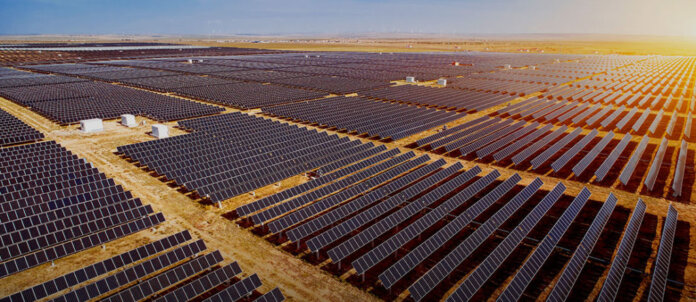Bank of America has signed a 15-year, 160 MW agreement with Constellation Energy Corp.to purchase power and project-specific renewable energy certificates (REC). This agreement will help Bank of America power approximately 17% of its global electricity consumption with clean, renewable energy from a portion of the Mammoth Central project, the third and final phase of the broader Mammoth Solar project, which is currently being developed by Doral Renewables LLC in Starke and Pulaski counties in Indiana.
Bank of America will receive renewable energy and RECs from Mammoth Central as part of its retail electricity supply contract with Constellation, which covers locations in Delaware, Pennsylvania and Virginia. By powering its facilities in these locations with solar energy, Bank of America is expected to reduce greenhouse gas emissions (GHG) associated with its energy use by more than 95,000 metric tons annually.
The agreement will begin when the project construction has been completed and the project becomes operational, which is expected in late 2024. By purchasing the RECs, Bank of America is also helping to facilitate the development of this project, which will provide renewable energy to the broader electric grid.
“Supporting utility-scale solar energy projects like this one demonstrates our strong commitment to net zero before 2050,” says Alex Liftman, global environmental executive at Bank of America. “This initiative will enable us to reduce our operational impact on the environment and help drive more renewable energy development in our local communities. It is critical that we accelerate the low-carbon transition by developing and deploying more low-carbon solutions, including a sustainable electric grid.”
Additionally, as part of the bank’s agreement, Doral will establish a pollinator habitat at the solar energy facility. This will enable nature-based benefits in the local community, including enhanced perennial vegetation that facilitates increased environmental benefits and other healthy habitats for pollinators. Bank of America required pollinator habitat specifications when selecting project partners. A pollinator scorecard is used to ensure the habitat meets the standards outlined by environmental nonprofit organizations. Some of the scorecard metrics include how much of the site is covered by wildflowers and native plants, bloom time, the presence of a site management plan, insecticide use, and outreach to the community.
“Through this purchase, Bank of America is demonstrating its commitment to addressing the climate crisis by directly supporting the development of a new-build renewable energy asset,” comments Jim McHugh, chief commercial officer at Constellation. “We’re focused on expanding our suite of sustainable power options, which will soon include an hourly carbon-free solution, to help our customers reach their net zero emissions goals.”
Bank of America will use the Constellation Offsite Renewables (CORe) retail power product to facilitate its renewable energy transaction.
“We are proud that Constellation and Bank of America chose Mammoth to advance their environmental, social and governance goals,” states Nick Cohen, president and CEO of Doral. “Investors all over the world are rewarding clean energy efforts and some of the biggest winners are communities that are being revitalized. Even the bees and butterflies are winners as the deal includes special provisions for a pollinator habitat. This commitment from Constellation and Bank of America is further validation to the economic development efforts of Indiana and the community leadership in Starke and Pulaski counties.”
The Mammoth Solar facilities will be built in three phases. Recently Doral Renewables secured tax equity financing from Bank of America for the first phase, Mammoth North. That financing will enable 400 MW of new solar power upon completion.




